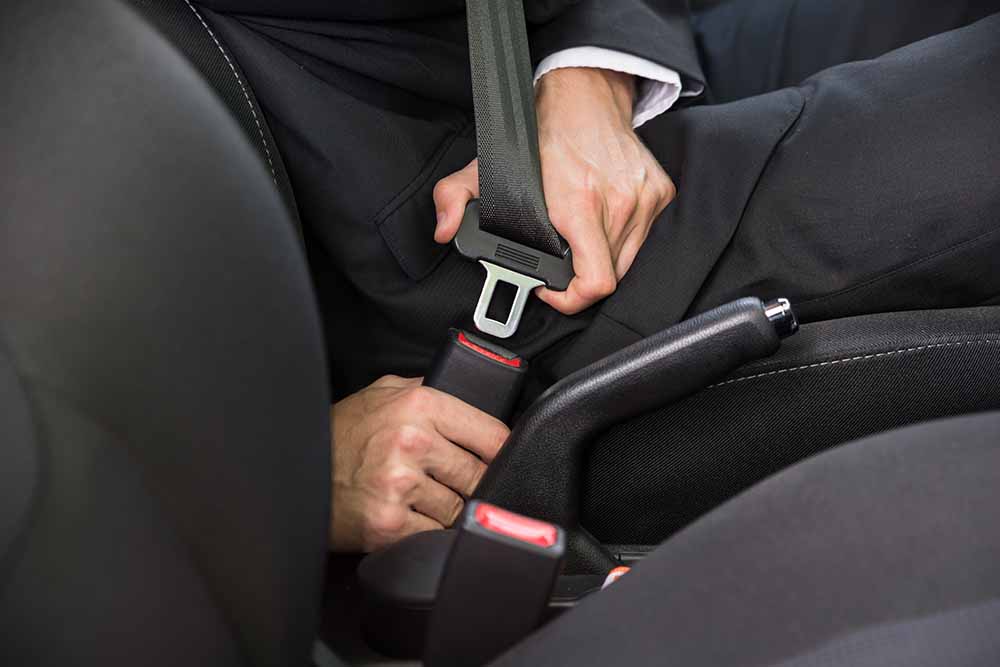What Is a Seatbelt Pretensioner? Types, Uses, & FAQ
-
Pete Ortiz
- Last updated:

The seatbelt is arguably one of the most important safety features in your vehicle. It protects you from being flung out of the vehicle and injured in the case of an accident. The seatbelt pretensioner is especially important in keeping yourself safe.
The seatbelt pretensioner is the part of the seatbelt that locks up in the case of an accident. Because it locks up, it helps to minimize the chance of injury in the case of an accident. As you might imagine, the seatbelt pretensioner is essential for staying safe.
Despite the importance of the seatbelt pretensioner, most people are none the wiser about this part and how it works. To fully understand what the seatbelt pretensioner is and how it works, keep reading. Because this part in your vehicle can save your life, it is worth learning about.
How Does It Work?
There are two main types of seatbelt pretensioners: electronic and mechanical. These two pretensioners serve the same purpose, but they work differently. Even so, there are some similarities between these two different pretensions.
Most importantly, both the pretensioners activate whenever an accident is detected. About 30 milliseconds after the collision, the pretensioner creates some slack so that you have controlled contact with your airbag. At the same time, the pretensioner locks up at this lack level so that you do not sling forward uncontrollably.
Once seatbelt pretensioners have been activated, the module needs to be rebuilt and repaired. In serious accidents, the entire system will be destroyed and require complete rebuilding.
What Are the Different Types of Seatbelt Pretensioners?
As mentioned above, there are two main types of seatbelt pretensioners: electronic pretensioners and mechanical pretensioners. Understanding the difference between these pretensioners can better help you understand how the contraption works in your vehicle.
Electronic Pretensioner
The electronic pretensioner uses a gas generator system and ECU, much like your airbag system. It uses an explosive charge produced by the gas generator to create gas volume. This volume then tightens the belt in the case of an accident. Electronic pretensioners are more effective than mechanical ones.
Mechanical Pretensioner
Mechanical pretensioners connect the seatbelt using a spring. This spring is compressed before an accident. When an accident occurs, the latching mechanism releases the spring, allowing the seatbelt to tighten any slack. Even though the electronic pretensioner is better, the mechanical pretensioner is still highly effective.
Where Is It Used?

Seatbelt pretensioners are used alongside seatbelts. The latch portion of the seatbelt is the pretensioner. Almost all seatbelts today come with a seatbelt pretensioner. At the very minimum, vehicles put seatbelt pretensioners in the front seats.
Advantages of Seatbelt Pretensioner
The seatbelt pretensioner is one of the most important parts of your vehicle. It has the advantage of keeping you safe in the case of a collision. It keeps you safe because it allows just a little bit of slack during this collision. This slack allows you to hit the airbag in a controlled manner.
To fully understand the benefit of this part, it might be helpful to consider what would happen without the seatbelt pretensioner. Seatbelts typically move freely so you can get in and out of your vehicle with ease and see everything around you. If the seatbelt pretensioner was not present, your seatbelt would move freely during an accident.
In this scenario, the force of the accident would cause you to fling forward. At the same time, the airbags would release. As a result, your body would fling full force into the airbag, which would result in major injury and harm. If the airbag didn’t deploy, you would hit the front of your vehicle in full force.
Because of the seatbelt pretensioner, you don’t have to worry about this occurring. Instead, the seatbelt pretensioner allows just the right amount of slack to be released so that you hit the airbag in a more controlled way. Consequently, the airbag system is used much more safely and effectively and keeps you safe.
Disadvantages of Seatbelt Pretensioner
The biggest downside of this part is that it needs to be rebuilt or repaired after being activated. This may cause you to spend more money than you would like after an accident.
The disadvantages of the seatbelt pretensioner are nothing in comparison to the advantages. Because this tool keeps you safe, it is certainly worth the downsides. After all, the fact that you have to pay to get the seatbelt pretensioner fixed means that the tool did its job.
Frequently Asked Questions
Do all seatbelts have pretensioners?

Most modern vehicles are equipped with seatbelt pretensioners for all seatbelts. At the very minimum, all front seats in vehicles have seatbelt pretensioners, but most back seat seatbelts have them as well.
How much does it cost to replace a seatbelt pretensioner?
On average, it costs about $150–$200 to replace the seatbelt pretensioner. This estimation includes the replacement parts and the cost of labor.
Where is the seatbelt pretensioner?
The seatbelt pretensioner is in the latch located close to the seat.
Conclusion
Once again, the seatbelt pretensioner is what causes a seatbelt to latch up whenever a collision is detected. This tool is essential for keeping you safe since it allows controlled contact whenever airbags are deployed. In most vehicles, all seatbelts come with seatbelt pretensioners.
Even though there are some downsides to seatbelt pretensioners, it’s essential to keep seatbelt pretensioners active in your vehicle. Although it is annoying to have to rebuild the pretensioner, the tool keeps you and your family safe, making it a necessity in your vehicle.
Featured Image Credit: Popov, Shutterstock
Contents


